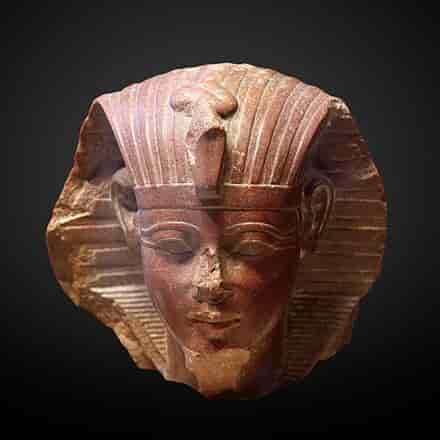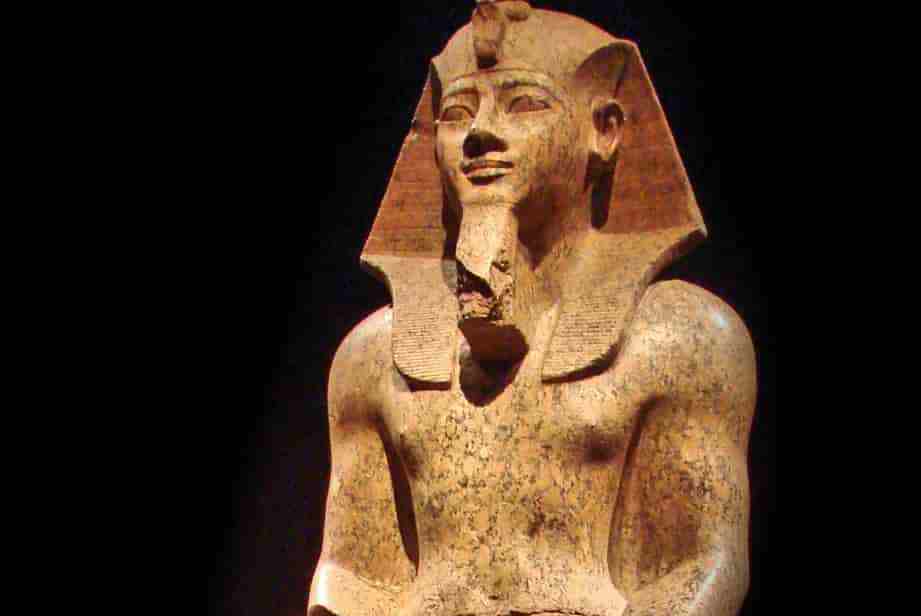When he wore the double crown of Egypt, on the death of his father Thutmose III, Amenhotep II received the greatest inheritance ever granted to any other pharaoh.
Thutmose III, the authentic builder of the New Empire, carried out seventeen victorious military campaigns that allowed him to greatly expand the borders of Egypt and make it the most powerful country of its time.
His empire extended from Nubia, in present-day Sudan, to Palestine, territory that Thutmose III managed to conquer in the fourteenth campaign of his reign.
Amenhotep II was the son of Merytre-Hatshepsut, second wife of Thutmose III, and was associated with the throne by his father, two years before his death.
Like his father, Amenhotep II was a warrior pharaoh, who boasted of the military training he had acquired in Memphis, as well as his exploits in the multiple hunting expeditions that he was pleased to organize.
What was Amenhotep II known for?
In fact, he managed to pass to posterity as a brave and athletic king, with such physical strength that, according to his own words, engraved on the stone; no one was able to draw his bow.
A bas-relief from Karnak, exhibited today in the Luxor museum, shows Amenhotep II as an archer, shooting arrows at a copper target, with the reins of his horse draft tied around his waist.
First Campaigns
From his accession to the throne, Amenhotep set out to consolidate the empire newly conquered by his father and, most importantly, defend it against external threats, particularly from the traditional enemy of ancient Egypt in that period, Mitanni, a kingdom located on the borders of the current Armenia that carried out numerous attacks on Egyptian positions in Syria.
The new pharaoh carried out three war campaigns on Syrian soil. The first foray took place in the third year of his reign with the aim of quelling a secessionist uprising by a coalition of Asian princes from southern Syria.
Although we have few details of this campaign, it was considered an easy victory, judging by the low number of captured enemies.
The following campaign, begun in the seventh year of his reign, was aimed at crushing further uprisings on Syrian soil. The initial clash with the enemy took place beyond the banks of the Orontes River.
As it is related in the inscriptions of two stelae found in Memphis and Karnak, after crossing the river, Amenhotep II saw that some Asian riders from the city of Katma were approaching.
Pharaoh launched himself at them attacking the chief with his axe; “just like Montu in his hour” (Montu was the Egyptian god of war).
The Asians fled in disarray and Amenhotep captured their weapons and horses; then he tied the ringleader to the end of his war chariot.
The Egyptian army took the city of Niy, which surrendered without conditions. But this did not end the fighting. The Memphis stele mentions two immediately subsequent rebellions.
First, the Ugarit population rose up against the prominent Egyptian garrison in the city, and then several nomadic tribes also revolted against Egyptian rule.
After ending both uprisings, Amenhotep II headed back towards the Orontes. In this way he was able to conquer the cities of Hetera, Ynek and Qadesh.
The king of this last city, as well as his sons, swore allegiance to Pharaoh and he made a triumphant return to the country of the Nile.
Two years later, Amenhotep II launched his last campaign in Palestine. It was, as in the two previous contests, a punishment expedition against several Palestinian towns.
The Memphis and Karnak stelae tell that Amenhotep reached the city of Apek, an enclave near the access road to Lebanon. It is clear from the text that the city surrendered without a fight when it sighted the Egyptian army.
Also engraved on the Memphis stele was a dream that Amenhotep II had, in which the god Amun appeared before him to give him his strength and grant him protection.

Amenhotep II: The builder
Otherwise, Amenhotep II’s reign was largely peaceful and marked by stability. This allowed Pharaoh to carry out intense constructive work throughout the country.
He continued the work that his father started in Amada, the Nubian temple dedicated to the gods Amun and Ra-Horakhty.
Among his interventions in Karnak, his temple stands out, erected on the side access road to the temple of Amun.
There are hardly any vestiges of his funeral temple, built on the western bank of Thebes, but he left other monuments in almost all the ancient cult centers, especially in Upper Egypt, such as El Kab, Elephantine, Armant, Giza, Gabal el- Silsila, Gabal Tingar, El-Tod, Dendera and Heliopolis, as well as in Qasr Ibrim, Sehel, Buhen and Kumma, in the Nubia region.
However, the best preserved monument of Amenhotep II and, therefore, the most visited today is his tomb. It was excavated in the Valley of the Kings.
What was found in Amenhotep II’s tomb?
The layout of the tomb of Amenhotep II, with its broken main axis, follows the model of the tomb of Thutmose III, as well as its mural decoration, whose main motif is the Book of Amduat “Text of the Hidden Chamber Which is in the Underworld”, the night journey of the sun god Ra.
Amenhotep’s sarcophagus was placed in the burial chamber, on a lowered floor that forms a crypt. There, the pharaoh’s mummy was found in 1898 by archaeologist Victor Loret, the discoverer of the KV35 tomb, as it is called.
However, the discovery of the mummy of the owner of the tomb is not what makes the discovery of Loret is considered one of the most important in the Valley of the Kings.
In his exploration, the French archaeologist discovered, in a room to the right of the burial chamber, three other uncovered mummies, placed next to each other; of one of them we know today that it corresponds to queen Tiye.
In addition, in the crypt room, Loret could see, through a hole in a wall, a space in which nine sarcophagus were arranged, which he thought would correspond to members of the royal family.
Later he found that they were the mummies of various members of Egyptian royalty: Thutmose IV and Amenhotep III, respectively the son and grandson of Amenhotep II, as well as Seti II, Siptah, Setnakhte, Ramses IV, Ramses V and the mummy of the high priest of Amun from the time of Thutmose III.
Indeed, the tomb of Amenhotep II had been enabled in antiquity as a hiding place to protect several pharaonic mummies from looters, a royal hiding place comparable to that of Deir el-Bahari, discovered a few years earlier, in 1881, by Emile Brugsch.
Source: National geographic







